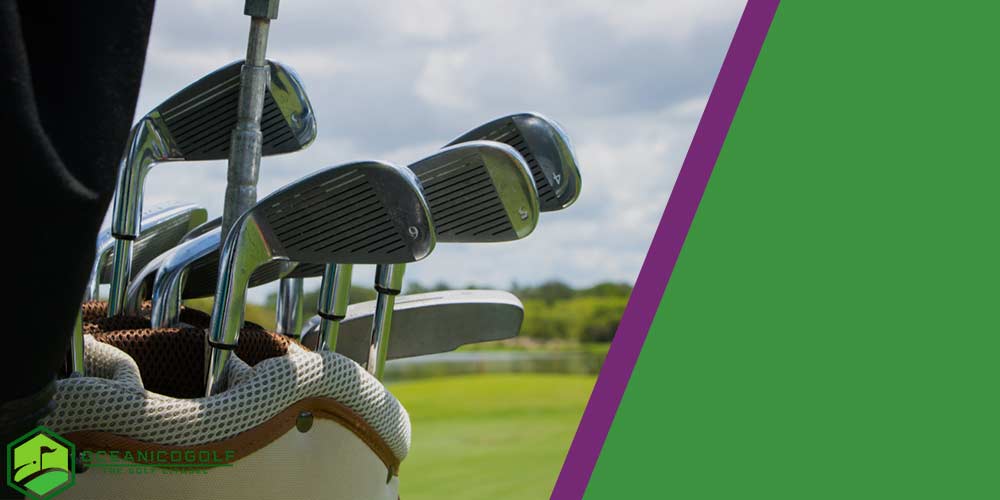W88, Situs Judi Online Terbaik di Indonesia dan Asia
W88 adalah tempat terbaik untuk Anda bermain segala jenis permainan judi online. Semua permainan judi online, mulai dari slot online, kasino online, poker online, judi bola online, hingga judi olahraga online lainnya tersedia untuk dimainkan di W88.
Sudah mulai beroperasi sejak tahun 2016, W88 kini tumbuh semakin besar dengan para player yang mencapai puluhan ribu. Hal ini bisa terjadi karena para pemain percaya jika W88 adalah tempat terbaik untuk mereka memainkan segala jenis game judi online.
Sebagai situs judi online terbaik dan terpercaya di Indonesia dan Asia, W88 menyediakan beragam game judi online terkemuka yang telah mendapat lisensi dan sertifikasi resmi. Game-game judi online ini dihadirkan oleh provider game terkemuka untuk bisa dimainkan dan dimenangkan oleh para pemain yang memilih bermain di situs kami.
Tidak cukup sampai di situ. Game-game judi online yang bisa dimainkan di W88 adalah game-game pilihan yang memberikan peluang mudah menang bagi para player. Hal ini sengaja kami lakukan agar para pemain tidak perlu lagi repot-repot mencari permainan yang bisa memberikan mereka peluang menang lebih besar.
Kenapa Harus Main di W88
Seperti yang sudah dijelaskan di atas, W88 adalah situs judi online terbaik dan terpercaya di Indonesia dan Asia untuk saat ini. Selain menyediakan game judi online terlengkap dan menghadirkan game judi online berlisensi dan bersertifikasi, ada beberapa alasan lain kenapa Anda harus bermain di situs kami.
Berikut ini beberapa alasan tersebut :
- Game Judi Online Mudah Menang
Game-game judi online yang tersedia di W88 merupakan game judi online pilihan yang dijamin memberikan kesempatan menang lebih besar bagi para pemainnya. Game-game tersebut merupakan game judi online populer dunia yang sengaja dihadirkan agar memberi kesempatan main lebih luas bagi para pemain di Indonesia.
- Promo Menarik
Anda bisa mendapatkan promo setiap harinya jika bermain di W88. Selain promo new member, ada beberapa promo lainnya yang bisa Anda temui jika memainkan sebuah permainan secara spesifik. Penasaran apa saja promonya? Segera daftarkan diri Anda dan temukan langsung informasinya di situs kami.
- Proses WD dan Depo yang Mudah
Untuk menjamin kenyamanan para pemain di W88, kami sengaja memberikan kemudahan untuk melakukan deposit atau wd dan withdraw atau wd bagi para pemain yang terdaftar. Proses depo dan WD ini bisa dilakukan melalui berbagai metode. Beberapa metode ini diantarany adalah transfer bank dan menggunakan e-wallet.
Jenis-jenis Judi Olahraga di W88
Sebagai salah satu situs judi online yang terdepan dalam hal judi olahraga, W88 merupakan tempat terbaik untuk Anda mulai berjudi. Tidak hanya sekedar judi bola, ada judi olahraga lain yang bisa dimainkan di W88. Berikut ini beberapa diantaranya:
- Judi atau Taruhan Bola
Sebagai salah satu bentuk perjudian online populer, judi bola muncul dan berkembangan dengan sangat cepat di seluruh dunia, termasuk Indonesia dan Asia. Pada awal kemunculannya, judi bola hanya terfokus pada menang kalah saja. Namun, kini muncul bentuk baru judi bola, seperti taruhan handicap, atas/bawah, dan genap/ganjil. Bahkan, tim atau pemain yang mendapat kartu pertama juga bisa dipertaruhkan saat ini.
- Judi atau Taruhan E-sport
Perkembangan zaman membuat olahraga tidak hanya dimainkan dalam bentuk fisik saja, melainkan juga melalui internet. Dengan lahirnya e-sport, kini bermunculan pula game-game online yang dipertandingkan dalam beberapa turnamen, bahkan hingga tingkat Olimpiade. Taruhan untuk olahraga semacam ini juga dapat ditemui di W88.
- Judi atau Taruhan Olahraga Lain
Tidak cuma sepak bola, kini hampir semua jenis olahraga menjadi salah satu bidang yang bisa dipertaruhkan melalui judi online. Olahraga-olahraga populer, seperti tennis, kriket, tinju, hingga golf bisa dipilih oleh para pemain judi untuk dipertaruhkan, termasuk di W88.
Game Judi Online Lainnya di W88
Selain menjadi situs judi olahraga dan judi bola online terdepan di Indonesia dan Asia, W88 juga menjadi salah satu situs judi online lainnya. Berbagai permainan judi online populer juga bisa Anda temui di W88.
Salah satu permainan judi online tersebut adalah judi slot online. Salah satu permainan atau game judi online populer di dunia ini juga tersedia untuk dimainkan di W88. Mulai dari slot Pragmatic, slot PG Soft, slot Microgaming, slot Habanero, hingga Slot88 bisa dimainkan di situs W88.
Selain itu, ada juga permainan poker online atau judi kartu online. Berbagai jenis game judi kartu online, seperti poker, baccarat, blackjack, dan dragon tiger online bisa Anda mainkan di W88.
Game-game ini sengaja kami hadirkan agar para pemain tidak perlu berpindah ke situs lain untuk bisa memainkan game-game judi online favorit. Selain itu, kami juga berkomitmen untuk menjadi situs judi online terbaik dan nomor 1 di Indonesia dan Asia, sehingga permainan judi online yang beragam akan membantu kami untuk meraih titel tersebut.
Aplikasi W88 Tersedia untuk Diunduh
Untuk memudahkan para pemain judi online, W88 juga menyediakan fasilitas aplikasi. Hal ini kami lakukan agar para pemain tidak hanya bisa mengakses situs kami melalui Google Chrome, Internet Explorer, ataupun Safari. Dengan aplikasi ini, Anda bisa langsung memasang taruhan dan bermain di W88.
Aplikasi W88 ini tersedia untuk diunduh atau download melalui Playstore dan juga App Store. Untuk memudahkan para pemain, Anda hanya tinggal memencet tombol gambar atau ikon telepon yang ada di halaman Home W88. Setelah itu pilih sistem operasi yang sesuai dengan perangkat Anda.
Apa yang harus dilakukan setelah aplikasi terunduh? Berikut ini panduannya.
Untuk OS Android atau Playstore:
- Jika perangkat lunak tidak diunduh secara otomatis ke perangkat Anda, maka Anda perlu mengklik kotak “Unduh” dan membukanya untuk mulai menginstal aplikasi.
- Jika ada pesan yang tidak diketahui asalnya di layar, maka Anda perlu mengklik “OK” untuk mengizinkan aplikasi diinstal pada ponsel Anda.
- Segera perangkat lunak akan secara otomatis diluncurkan dan diinstal oleh mesin. Ketika Anda melihat ikon W88 pada antarmuka, itu berarti instalasi selesai.
Untuk OS iOS atau App Store:
- Setelah Anda selesai mengunduh perangkat lunak ke perangkat Anda, Anda harus memilih “Buka di iTunes”.
- Karena Apple sering menggunakan teknologi keamanan modern, oleh karena itu saat menginstal perangkat lunak seluler W88, Anda perlu mengkonfirmasi setiap langkah untuk dapat mengizinkan aplikasi berjalan di perangkat Anda.
- Langkah selanjutnya, Anda harus pergi ke “Pengaturan” > “Pengaturan umum” > “Informasi dan manajemen perangkat” dan centang kotak “Green Communications Inc”. Di sini, pilih “Trust” untuk menyelesaikan proses instalasi.
Metode Depo dan WD di W88
Seperti yang sudah dijelaskan sebelumnya, Anda sebagai pemain akan dimudahkan dalam melakukan depo dan WD di situs kami. Kami menyediakan berbagai pilihan untuk melakukan depo dan juga WD. Mulai dari transfer bank, melalui pulsa, hingga melalui e-wallet bisa Anda pilih.
Untuk transfer bank, Anda bisa melakukan depo dan WD melalui bank-bank besar yang ada di Indonesia. Mulai dari BRI, BNI, Mandiri, BCA, hingga CIMB Niaga bisa menjadi pilihan bagi para pemain di W88 untuk melakukan depo dan WD.
Untuk mulai bertaruh sendiri Anda tidak perlu mengeluarkan modal dengan nominal yang besar. Anda bisa mulai bertaruh di W88 dengan minimal depo Rp50.000 di W88. Tentu saja nominal ini tidak akan memberatkan kalian, kan?
Terakhir, untuk melakukan depo dan WD di W88 sendiri tidak memerlukan waktu yang lama. Anda bisa melakukan depo dan WD dalam waktu kurang dari 5 menit sejak Anda memulai proses tersebut. Kemudahan ini kami berikan agar para pemain tidak merasa dirugikan atau dicurangi ketika bermain di W88.
Berbagai Promo yang Ada di W88
Jika Anda bermain judi online di W88, Anda dijamin akan lebih banyak merasa diuntungkan dibandingkan dirugikan. Hal ini dikarenakan selain mudah menang, jika Anda bermain di W88, Anda akan menemukan berbagai promo menarik yang tidak bisa Anda dapatkan di situs judi online lainnya. Berikut ini beberapa diantaranya:
- 150% Welcome Bonus hingga Rp 2.000.000 di Slots, Live Casino, Lottery
- Bonus instan Rp 500.000 di Sports, Slots, Club W, Keno
- Bonus Rp500.000 untuk setoran awal
- Bonus Rp 50.000 setelah konfirmasi akun aman berhasil.
Kesimpulan
Dari penjelasan yang dijabarkan di atas, dapat disimpulkan jika W88 merupakan situs judi online terbaik dan terdepan di Indonesia dan Asia untuk saat ini. Beragam keuntungan yang tersedia di situs W88 akan menjadi modal awal untuk meraih kepercayaan publik agar mau bermain di situs kami. Selain dijamin aman, Anda juga dijamin akan menang lebih mudah jika memutuskan untuk bermain di berbagai game judi online yang tersedia di W88.
Tunggu apalagi, daftarkan diri Anda dan rasakan kenikmatan bermain judi online hanya di W88!



















